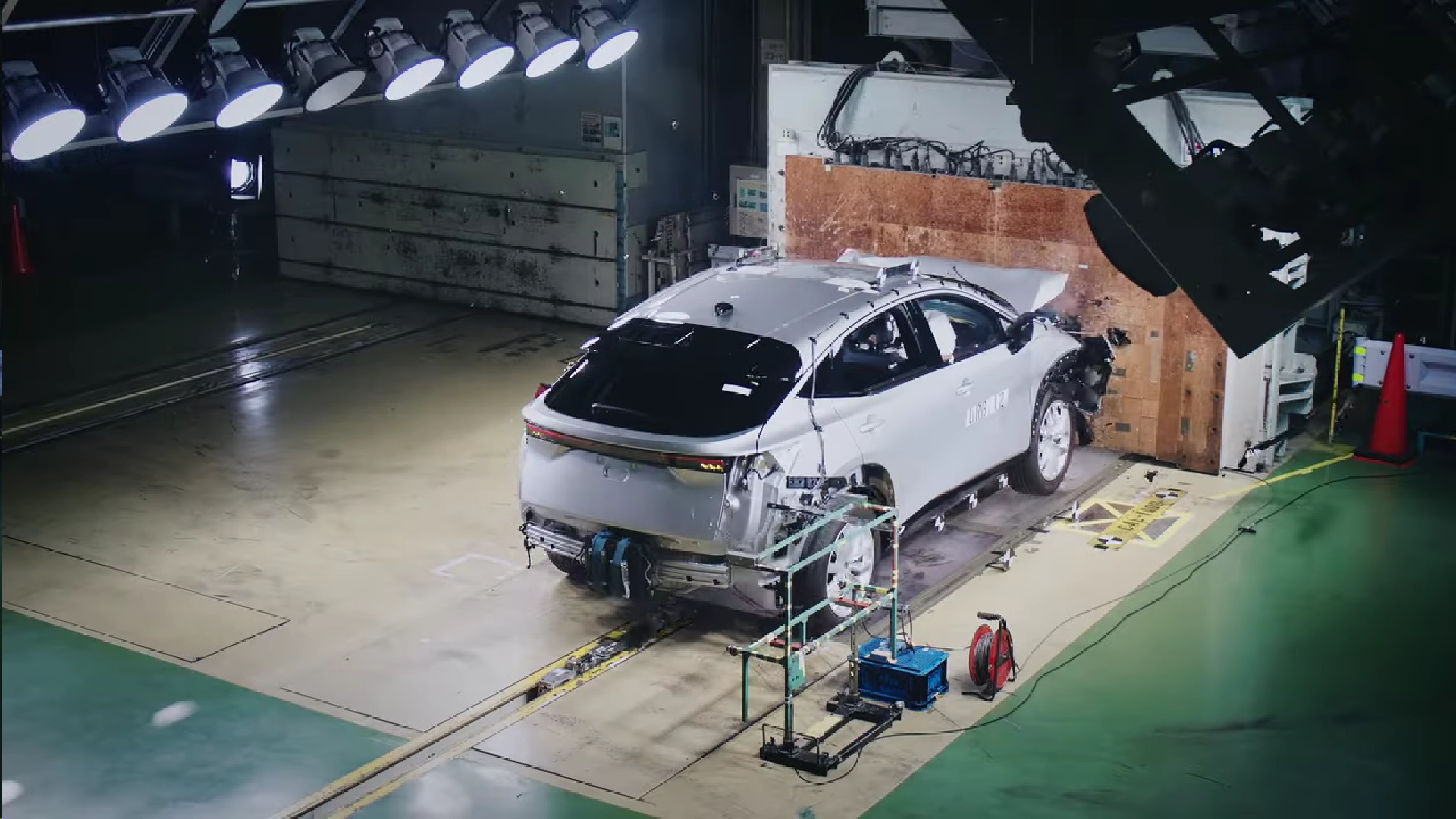Although getting a car ready for a crash test takes lots of preparation time, the part that researchers are interested in lasts just 1/1000th of a second. For Nissan, that fraction of a second takes place at its Technical Center in Atsugi, Japan.
There, a team of engineers works to ensure that its vehicles are ready to undergo strict crash tests around the world and keep occupants safe. For the Nissan Ariya, the challenge is even greater.
Unlike the majority of Nissan’s vehicles, the Ariya contains a massive battery pack under the floor that must be kept safe, along with the occupants. That means that structures and methods developed for the LEAF were adopted for the brand’s latest EV.
Read Also: Rimac Completes The Final U.S. Crash Test For The Nevera Supercar
Nissan says that the Ariya has consequently undergone stricter safety testing than what is required by regulators to ensure that electrodes don’t leak.
“More than 100 data points are evaluated on the Ariya,” said Gen Tanabe of the Passive Safety Evaluation Group. “Because the upcoming Ariya will be sold in many markets, we will conduct more than 400 tests from the early stages of development to market launch.”
To accomplish that, the Ariya is subjected to frontal, side and rear impact crash tests, along with pedestrian crash tests to ensure that the vehicle is capable of being sold in every market Nissan has envisioned for it.
Along with the passive safety technology, Nissan says that it is also developing more and more active safety technology as part of its “Safety Shield concept.” With that, it hopes to keep passengers safe not just by a strong safety structure, but by avoiding accidents altogether.




